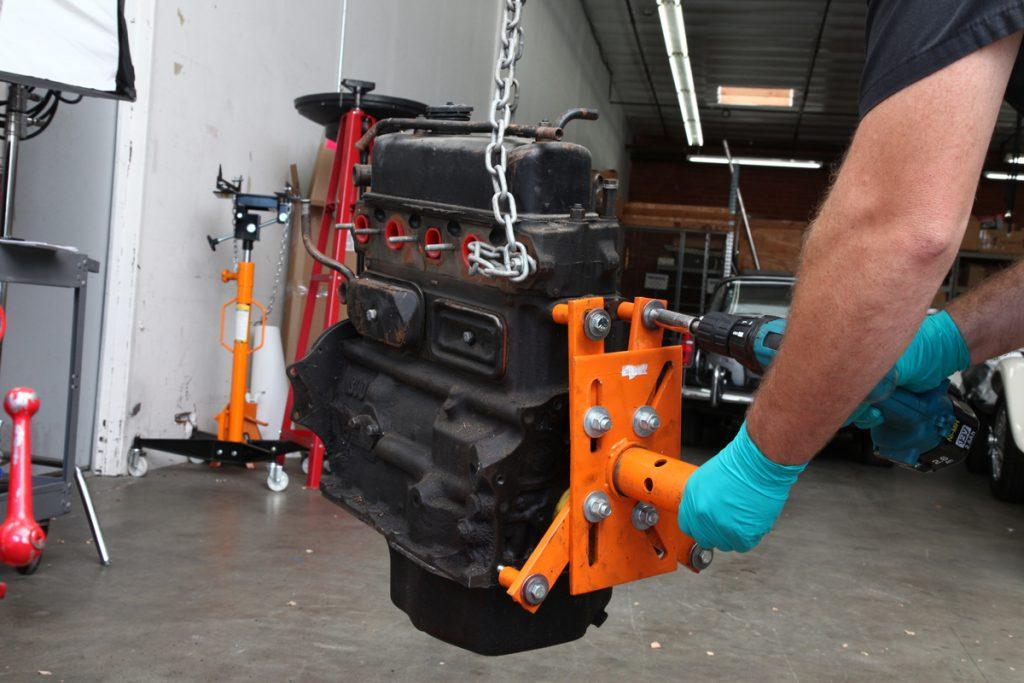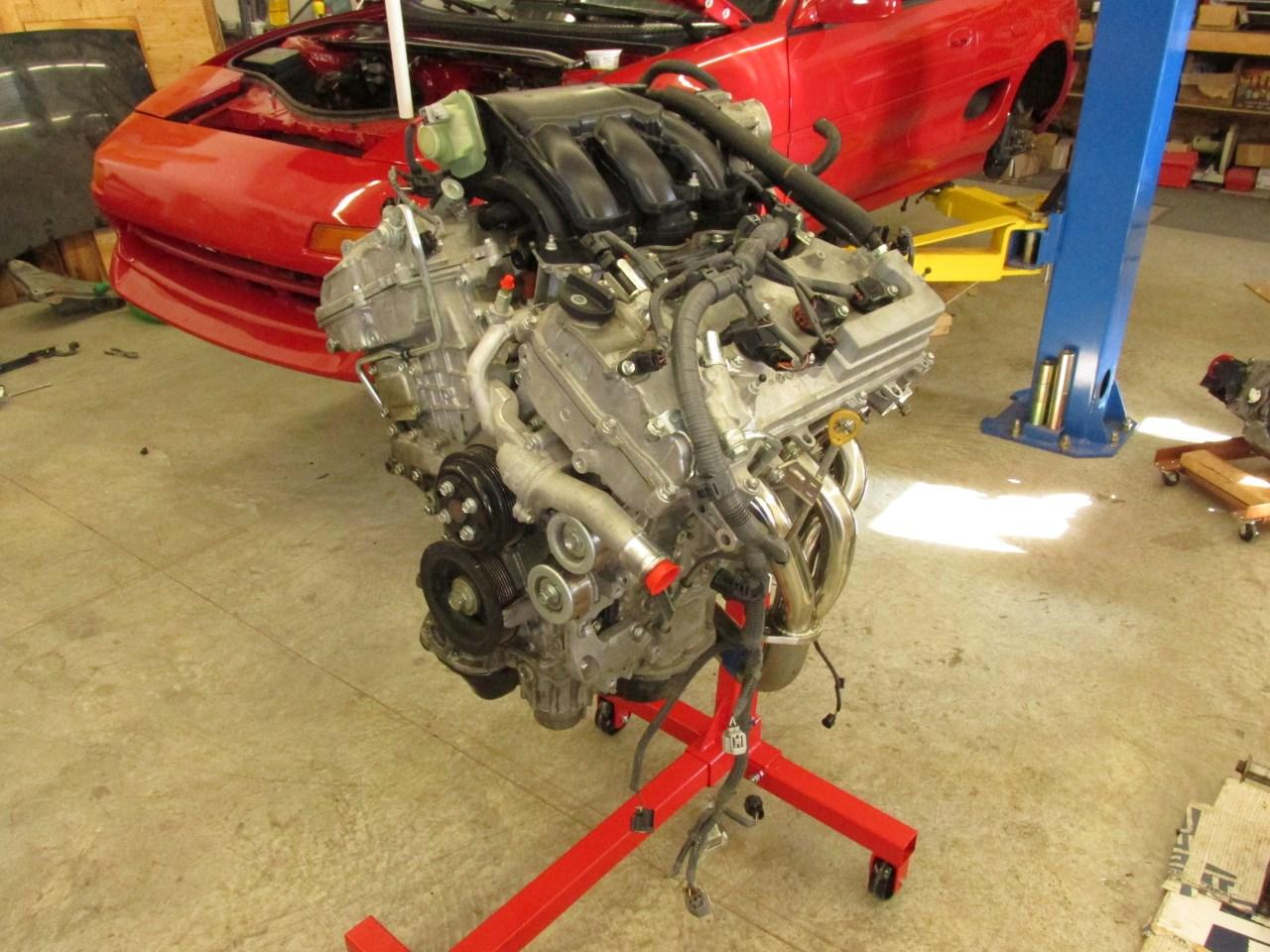Poor transportation of car parts in a service station can cost you a lot. Some DIY-project drivers do not even know how to use an engine stand. So, let us find the process to make car servicing easier.
A car makes our transportation easier. We travel in the car for almost half of our life, if we own a vehicle. But, what about the transportation of car parts. Yes, we usually forget to take care of our car, which is imperative.
Contents
Why & How To Use An Engine Stand? Know The Procedure
The engine stand is the latest technology that most of the service stations and expert mechanics use nowadays. It is used to lift, rotate, transport, and examine the engine.
But, most of the mechanics do not use the engine stand, which reduces the life of an engine as well. Let us find out the benefits of an engine stand and its uses!
1. Transporting
The engine stand is mainly put to use for transporting the engine from one place to another. After attaching the engine to engine-stand, it becomes easier to shift it anywhere.
The stand can lift heavy-duty engines and has tires to make this business easy. Moving a heavy-duty engine with hands while dragging it to the floor can decrease its lifespan.

Attaching the engine stand to an engine is not an easy job. One has to attach it with the bolts of the gearbox having the correct length as required. If the length is not accurate then make sure to replace the bolts first.
Look nearby for the service members who understand how to use an engine stand properly to make transportation easier.
SEE MORE:
- Why Are Heavy Diesel Engines Used in Heavy Vehicles? Know The Reasons
- Why Is Engine Better? SOHC or DOHC
2. Rotating
The part of the engine stand, which is attached to the engine’s gearbox, is removable. One can remove it before installing the engine to it directly.
The engine can be tied up to the stand while hanging with the crane or placed on the ground. It is easy to rotate the engine in any direction while hanging on the engine stand.
One must take care of the rotating assembly to be accurately attached before servicing the engine. That is how an engine stand rotates the engine in directions as required.
3. Lifting & Servicing
Installing the engine to an engine stand makes it easier to examine and repair. One can use the stand for lifting the heavy engine to the crane.
Lifting can be done with the manual crane by attaching to the rotating assembly of the stand first.
This will assist in avoiding any dilemmas that can happen if the engine drops from a height. Servicing and repairing become unproblematic after the engine is installed to the stand.
You can adjust its height by regulating the knobs. This is how an engine stand lifts a heavy-duty engine and makes repair easier. Refer to the maintenance tips online for more info.
>> Looking for a high-quality used car from Japan, click here <<
FAQs on An Engine Stand
-
Can I rotate the engine on the stand by myself, or do I need assistance?
While many engine stands are designed to allow a single person to rotate the engine, the ease of rotation can vary based on the stand’s design and the engine’s weight.
For safety and ease, it’s often helpful to have an assistant, especially when dealing with heavier engines or if the stand’s mechanism is stiff.
-
How do I ensure the engine is balanced properly on the stand?
Balancing the engine correctly is crucial to prevent it from tipping. This often involves positioning the mounting arms of the stand at points on the engine block that allow for even weight distribution.
Before rotating or working on the engine, always double-check that the engine is securely attached and balanced.
-
Can I perform all types of engine work with the engine mounted on the stand?
While an engine stand allows for easier access to most parts of the engine, certain tasks, such as heavy torque applications, might require extra caution or alternative methods.
It’s important to stabilize the stand if applying significant force to avoid tipping or damaging the engine and stand.
-
What maintenance does my engine stand need?
Regularly inspect your engine stand for signs of wear, rust, or damage, especially if it’s frequently used or stored in a damp environment.
Lubricating moving parts, such as rotation mechanisms and casters, can ensure smoother operation and prolong the stand’s life.
-
Is there a risk of damaging the engine while it’s mounted on the stand?
If mounted and handled correctly, the risk of damaging the engine is minimal. However, improper mounting or attempting to move the stand over uneven surfaces can pose risks.
Always follow the manufacturer’s guidelines for mounting and handling to minimize any potential for damage.
-
How do I choose the right engine stand for my project?
Consider the weight of your engine and any specific tasks you plan to perform. Engine stands are rated for different weight capacities, so choose one that comfortably supports your engine’s weight.
Additionally, look for stands with features that suit your needs, such as 360-degree rotation or adjustable mounting heads.
-
Can engine stands be used for engines of any make and model?
Most engine stands are designed to be versatile, but compatibility with every make and model isn’t guaranteed.
Check the stand’s compatibility, especially for engines with unusual mounting points or those that are particularly heavy. Adapters are available for some models to ensure a proper fit.
How to set up the engine on the engine stand ? Watch the video below from João Rocha da Silva!
Wrapping Up
Opt for the mechanic who knows how to use an engine stand correctly. And, add more days to the life of your engine.



